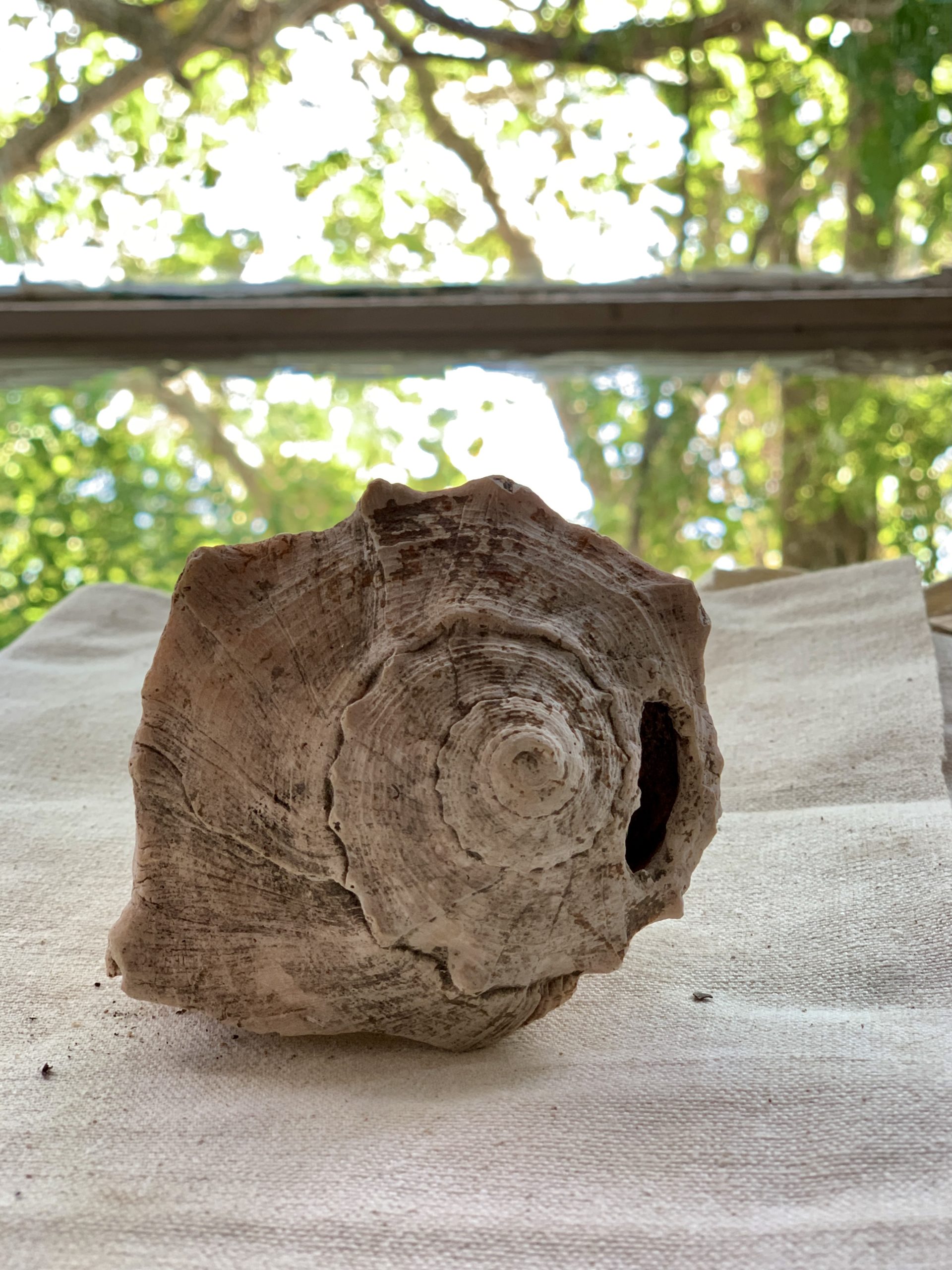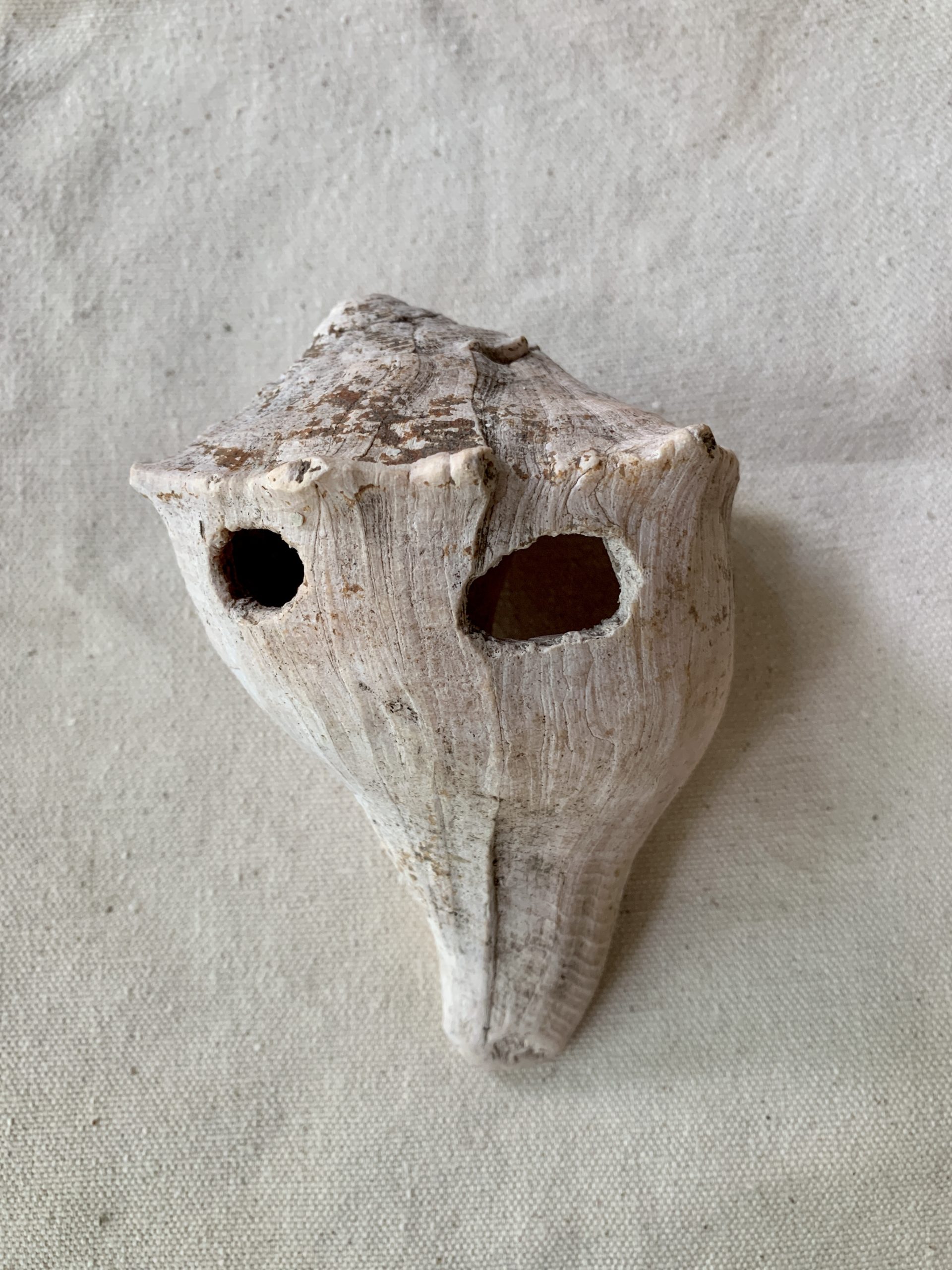

Lightning Whelks may be found along the Atlantic Coast and Gulf Coast ranging from Texas to North Carolina. They are unique in that they are left-handed, or sinistral, meaning they spiral counterclockwise.
For early coastal inhabitants, the Lightning Whelk provided an excellent food source as well as material for specialized objects both ceremonial and utilitarian. The shell could be modified to manufacture jewelry, tools, and cups. At the Historic Spanish Point campus we have a variety of shell tools in our collection that range in size and purpose.
Similar to the tools in our own toolbox today, specialized shell tools would have been manufactured or modified to accomplish particular tasks. Examples of tasks may include chopping, cutting, or measuring which would require hammers, scrapers, and net gauges to name only a few of the many tools that could all be made from a Lightning Whelk.
The tool we are sharing today may have served multiple purposes including a chisel. The hole in the top of the crown is where the meat was initially removed and the two holes on the side of the shell were drilled for tool use. Part of the outer shell has been removed and there is a worn notch present where the handle would have been inserted. The hole in the top shows wear and may have been used to secure the shell to the handle. The two holes on the side also show wear and were most likely used separately for different functions. We can determine based on the anterior end of the shell that it was used as a chisel as it has a deeply worn angle and wear on both sides. Also note that this Lightning Whelk is very robust which made for a very strong tool that could be used for a very long time.
Amy Dwyer, Selby Gardens research archaeologist, will be adding this to our Public Education Collection so next time you visit, feel free to ask her more about this and other shell tools.
Written by Amy Dwyer, Selby Gardens research archaeologist
